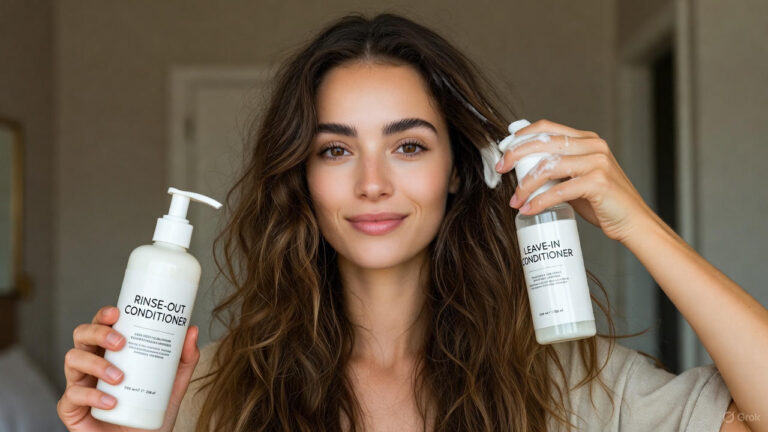Beauty is often portrayed as a coveted trait, with characters resorting to enchanting rituals and mystical remedies to achieve their desired appearance.
These timeless tales offer glimpses into the cultural beliefs and beauty standards of bygone eras, as well as the enduring fascination with youth, vitality, and physical perfection.
Join us as we embark on a journey through the enchanted worlds of folklore and fairy tales, exploring the magical beauty rituals that have captivated imaginations for centuries and continue to inspire modern beauty practices.
The Magic of Beauty Rituals in Folklore
Throughout history, beauty rituals have played a central role in folklore, with tales of enchanted mirrors, mystical potions, and magical transformations captivating audiences across generations.
In “Snow White,” for example, the evil queen employs dark magic to maintain her youthful appearance, resorting to potions and spells in her quest for beauty.
Similarly, in “Cinderella,” the titular character undergoes a miraculous transformation with the help of her fairy godmother, who uses magic to adorn her with a dazzling gown and glass slippers.
These stories not only showcase the power of magic in altering one’s appearance but also reflect deeper themes of self-acceptance, inner beauty, and the consequences of vanity.
Through fantastical narratives and larger-than-life characters, folklore explores the complexities of human nature and the timeless quest for beauty and perfection.
The Influence of Fairy Tales on Beauty Ideals
Fairy tales have long been influential in shaping societal perceptions of beauty, with iconic characters like Cinderella, Snow White, and Sleeping Beauty epitomizing traditional standards of femininity and grace.
From fair skin and flowing hair to delicate features and hourglass figures, these archetypal heroines embody idealized beauty traits that have permeated popular culture for centuries.
However, beneath the surface of these timeless tales lies a more nuanced exploration of beauty and its complexities. Characters like Belle from “Beauty and the Beast” and Fiona from “Shrek” challenge conventional beauty standards, emphasizing the importance of inner beauty, kindness, and compassion.
These modern reinterpretations of classic fairy tales remind us that true beauty transcends physical appearance and lies in the depth of one’s character and the purity of one’s heart.
The Symbolism of Beauty Rituals in Folklore
Beauty rituals in folklore are often imbued with symbolism and deeper meaning, reflecting cultural beliefs, societal values, and spiritual significance. In many traditions, beauty rituals serve not only to enhance physical appearance but also to ward off evil spirits, promote fertility, and instill a sense of confidence and empowerment.
For example, in ancient Greek mythology, the goddess Aphrodite was revered as the epitome of beauty and love, with rituals and offerings dedicated to her to ensure favor and blessings in matters of romance and desire.
Similarly, in Celtic folklore, the mystical properties of herbs and botanicals were believed to possess magical powers that could enhance beauty, protect against illness, and promote overall well-being.
The Resurgence of Ancient Beauty Rituals
In recent years, there has been a resurgence of interest in ancient beauty rituals and traditional skincare practices, as consumers seek natural alternatives to mainstream beauty products and embrace holistic approaches to self-care.
From Ayurvedic facial massages to Japanese tea ceremonies, ancient beauty rituals are experiencing a revival in the modern wellness movement, prized for their simplicity, efficacy, and connection to nature.
Facial gua sha, an ancient Chinese technique involving the use of a smooth jade or rose quartz tool to massage and sculpt the face, has gained popularity for its ability to promote lymphatic drainage, reduce puffiness, and enhance skin tone and texture.
Similarly, Ayurvedic beauty rituals, which emphasize the importance of balancing the body’s doshas through diet, lifestyle, and skincare practices, have garnered attention for their holistic approach to beauty and well-being.
Conclusion
Beauty rituals in folklore and fairy tales offer a glimpse into the magical worlds of imagination, where enchanting potions, mystical treatments, and transformative rituals hold the promise of eternal youth and timeless beauty. Through these timeless tales, we gain insights into the cultural beliefs, societal values, and spiritual significance of beauty rituals, as well as their enduring influence on modern beauty ideals and practices. Whether it’s the enchanted mirror of Snow White or the transformative magic of Cinderella’s fairy godmother, these age-old narratives remind us of the timeless allure of beauty and the enduring power of the human imagination.
FAQs
Q1: Are the beauty rituals depicted in folklore based on real practices?
While some beauty rituals in folklore may have roots in real practices or cultural traditions, many are embellished for dramatic effect and symbolic significance. However, elements of these rituals may have parallels in traditional skincare practices and holistic wellness traditions.
Q2: Can I incorporate elements of folklore-inspired beauty rituals into my skincare routine?
Yes, many elements of folklore-inspired beauty rituals can be incorporated into modern skincare routines, such as facial gua sha massage, herbal steam treatments, and aromatherapy. These practices offer natural alternatives to conventional beauty products and promote overall well-being.
Q3: Are there any dangers associated with practicing folklore-inspired beauty rituals?
While folklore-inspired beauty rituals are generally safe when performed correctly, it’s essential to research and understand the techniques and ingredients involved to avoid potential risks or adverse reactions. If you have specific skincare concerns or medical conditions, consult with a dermatologist or skincare professional before trying new rituals or products.
Q4: Can folklore-inspired beauty rituals help improve skin conditions such as acne or aging?
Some folklore-inspired beauty rituals may offer benefits for common skin concerns such as acne, aging, and dryness. For example, facial gua sha massage can help improve circulation, reduce inflammation, and enhance the absorption of skincare products, leading to clearer, smoother skin over time.
Q5: Where can I learn more about folklore-inspired beauty rituals and their origins?
Books, online resources, and cultural institutions are excellent sources of information on folklore-inspired beauty rituals and their origins. Look for reputable sources that provide historical context, cultural insights, and practical guidance on incorporating these rituals into your skincare routine.


